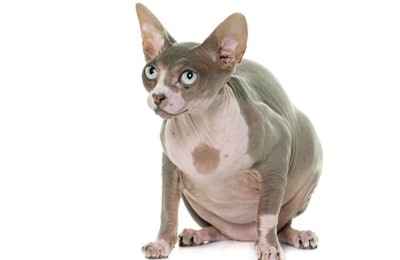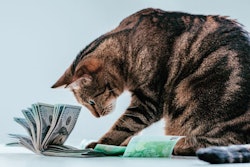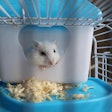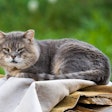
Cat obesity remains a problem for pet owners around the world. In the most recent Association for Pet Obesity Prevention’s (APOP) survey results available, U.S. veterinarians classified 33.8% of cats as obese in 2018. They identified 36.9% of cats as overweight. Pet food formulators may help address the cat obesity problem by creating weight-management recipes using certain ingredients that control appetite in cats. A research team at Wageningen University conducted experiments to test the properties of foods that influence appetite and satiety in cats.
“Based on the work, protein levels and fermentable fibers can be considered to stimulate appetite control in restricted-fed cats,” study co-author Guido Bosch, Ph.D., animal nutrition professor at Wageningen University, said in an email.
His team observed that not all fibers can be considered equal in pet food formulation. In their experiments, only certain fibers influenced appetite in cats.
“In one of our studies, we did not find any relationship between fiber and food motivation,” he said. “It is therefore crucial to carefully consider the physicochemical properties of fibers that relate to gastrointestinal bulking, gelling, viscosity and fermentability. These specific properties can impact appetite between meals. We observed satiety-promoting effects of fermentable fiber, but not for a gelling and a viscous fiber. We might have tested food motivation of cats too early for the latter two fibers or these fibers are less effective in cats than in humans. Furthermore, it is of interest to explore if the observed effects remain after longer periods of feeding fermentable fiber-enriched foods.”
Cat digestion of fiber
Cats’ and humans’ digestion of fibers differ. Likewise, cats haven’t evolved towards omnivory as dogs have. As obligate carnivores, cats adapted to eat prey animals whole, minus a few tufts of fur. Those mice, rabbits and other prey had plant matter in their own guts from their last meals. This matryoshka doll of nutrition means that feral cats do consume fibers, although in a very different way than domestic cats.
“On one hand, given a cat’s short and underdeveloped colon and relatively short colonic residence time, it may indeed be somewhat surprising that a fermentable plant fiber impacted the cat’s appetite,” he said. “On the other hand, cats eating small prey also have fermentable substances (animal fibers) in their gut that could impact the digestive physiology and appetite in a similar way plant fibers do. In this stage we do not know if plant or animal fibers can better stimulate specific aspects of the complex feedback from the gut to the brain resulting in appetite control.”
In follow-up work, Bosch’s team will focus on how food properties impact feeding patterns and energy intake over longer periods. Ultimately, they aim to provide insights into how formulators can make foods that prevent the development of obesity, as well as treat overweight and obese cats.
















